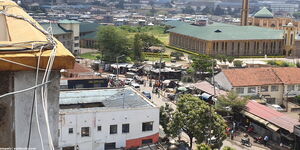The government has warned foreign contractors against flouting safety requirements hence putting Kenyans at risk.
A report by Daily Nation on Wednesday, January 27, indicated that the contractors, especially those awarded water tenders, flouted the rules hence risking calamities such as the collapse of buildings.
Public Works Principle Secretary Gordon Kihalangwa noted that the ministry was considering reviewing contracting laws to attract more local contractors.
He further noted that several foreign contractors have come into the country after winning one contract and end up spending up to ten years hence creating unfair competition for their local counterparts.
"This is a discussion we must have going forward, because we have heard of instances where some foreign contractors came into the country to undertake one project but ended up staying for 10 years.
"That is why institutions like NCA (National Construction Authority) exist to monitor such firms, sanity needs to return in this sector," stated Kihalangwa.
An earlier report by NCA had noted that three out of every 10 buildings in Kenya were likely to collapse due to various factors including poor workmanship.
Since the first storey building tumbled in 1990, the country has recorded 87 cases with the highest having occurred in 2015 where 21 buildings collapsed around the country.
Most of the incidents were revealed to have employed poor workmanship as the main cause.
Some of the cases emerged after contractors failed to comply with statutory and safety requirements.
The cases cost the country a combined sum of Ksh2.4 billion, though this is estimated to be on the lower side due to lack of insurance on some properties.
Kihalangwa, during the release of the report, noted that funding was a major issue in the sector and was largely responsible for the status quo.












